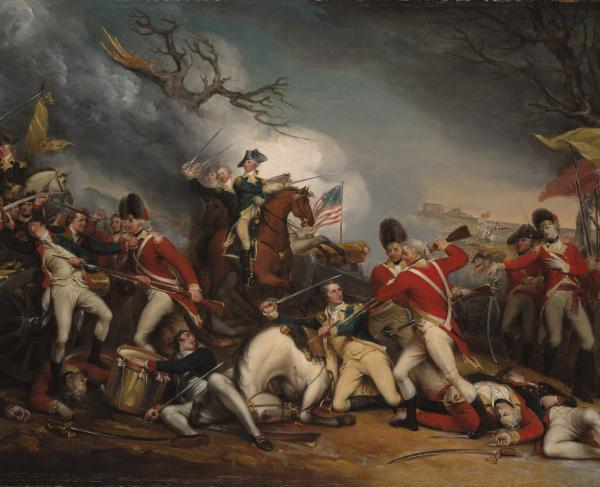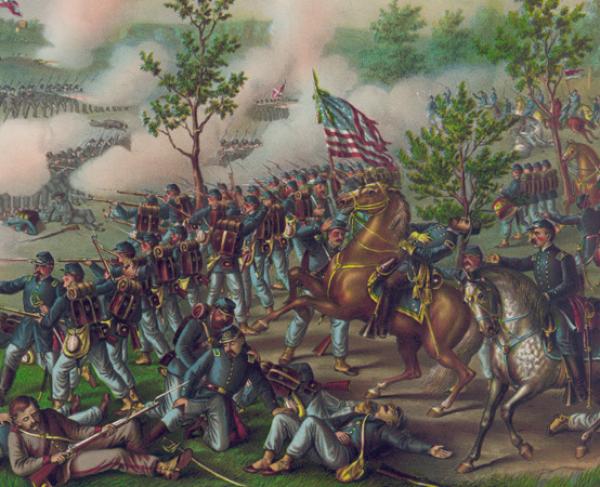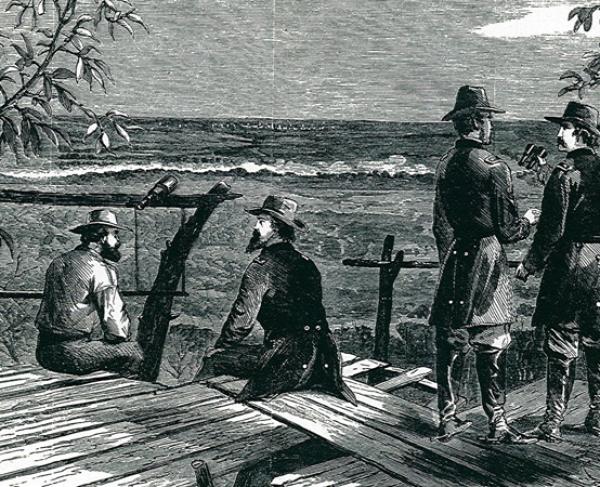Cheatham Hill
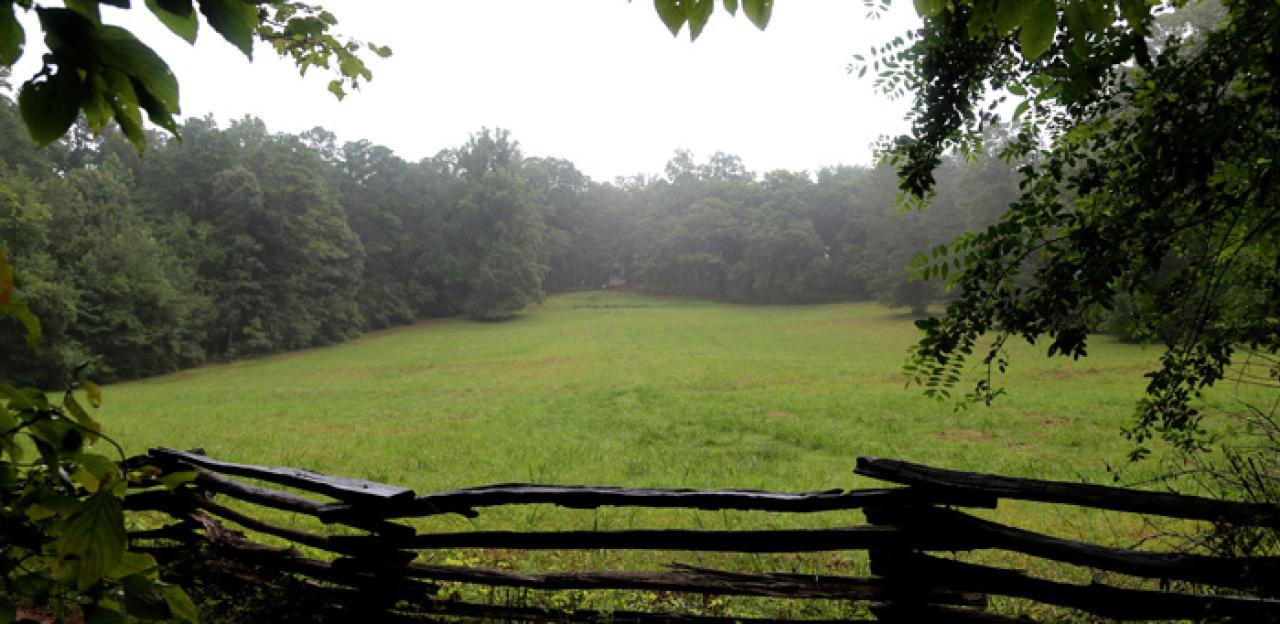
Stephen Davis
Two miles south of Pigeon Hill, the Northern and Southern lines were only 400 yards apart. General George H. Thomas thought this gave his assault an advantage. Troops chosen to attack here were Brig. Gen. John Newton's division of the Fourth Corps and, to its right, brigades of Col. Dan McCook, Jr. and Col. John Mitchell, from Maj. Gen. Jefferson C. Davis' division, Fourteenth Corps.
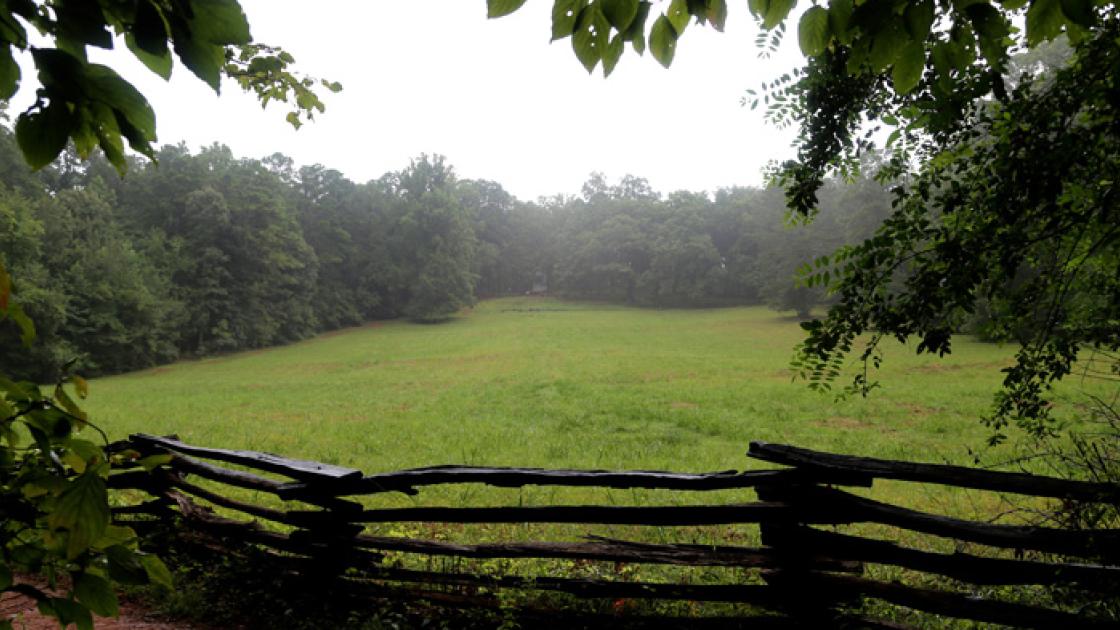
Facing Newton was Maj. Gen. Patrick Cleburne's veteran division, which had built abatis, driven sharp wooden stakes in the ground, and strengthened its entrenchments with headlogs. Brig. Gen. George Maney's brigade held the sector in front of the Fourteenth Corps attack. Maney's Tennesseans belonged to Maj. Gen. Frank Cheatham's division. Their position jutted forth in an inverted V salient on a rise that came to be called Cheatham's Hill.
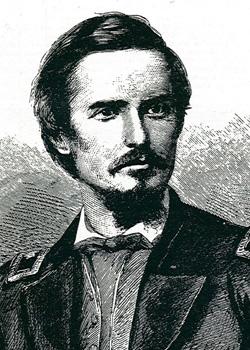
Federal artillery opened at 8:00 a.m., shelling the Rebel works for a quarter hour. Then Newton's three brigades stepped forth. Woods and brush were so thick that the Northerners could not even see the enemy line until they had come upon it. McCook's and Mitchell's men had to cross a low marsh before double-quicking up the slope toward the works. As at Pigeon Hill, the Federals succeeded in overrunning the Rebel skirmishers, capturing many of them. Newton's troops advanced under heavy fire, hitting the abatis maybe 45 yards from the enemy works. The Rebel musketry "mowed us down by the hundreds," lamented an Indianan. As the Fourteenth Corps infantry crossed the bottom land they came under artillery fire; Cheatham had placed two batteries south of the hill named for him. The Confederate infantry opened fire when McCook's troops were sixty yards away. Two cannon whose embrasure had been hidden by brush also fired. Some Federals got close to the enemy works. Col. McCook himself stood at the Rebel parapet urging his men on when he was shot in the chest. His soldiers hurried him to the rear. Col. Oscar Harmon of the 125th Illinois quickly took command of the brigade, and he was shot five minutes later, wounded mortally. Not long afterward McCook's attack fell apart. "Somehow we lost our grit," as one soldier put it. Soon the Federals started withdrawing, some more quickly than others. "Men came rushing down the slope in crows breathing hard through fear and physical exhaustion," wrote one Northerner.
In Newton's attack, some Federals got close to the enemy parapet before they fell. Those who were not shot hit the ground as well, for safety. Brig. Gen. Charles Harker on his white horse rode to the front of his brigade. "Forward, men, and take these works," he yelled before being struck in the arm and chest. Col. Luther Bradley of the 51st Illinois took over, but soon sent word to the rear that the "head of his column is all smashed up and disorganized." The men fell back, many hurriedly, "running over and tramping each other under foot," as one described. A number of Northerners too close to the enemy line to get back safely simply surrendered. May of Cleburne's men rose out of their ditches to get better aim on these easy targets. By 10:00 a.m., Newton's attack was over. Casualties number 654, including General Harker, who died at 1:00 p.m. Cleburne believed his division lost all of 11 men.
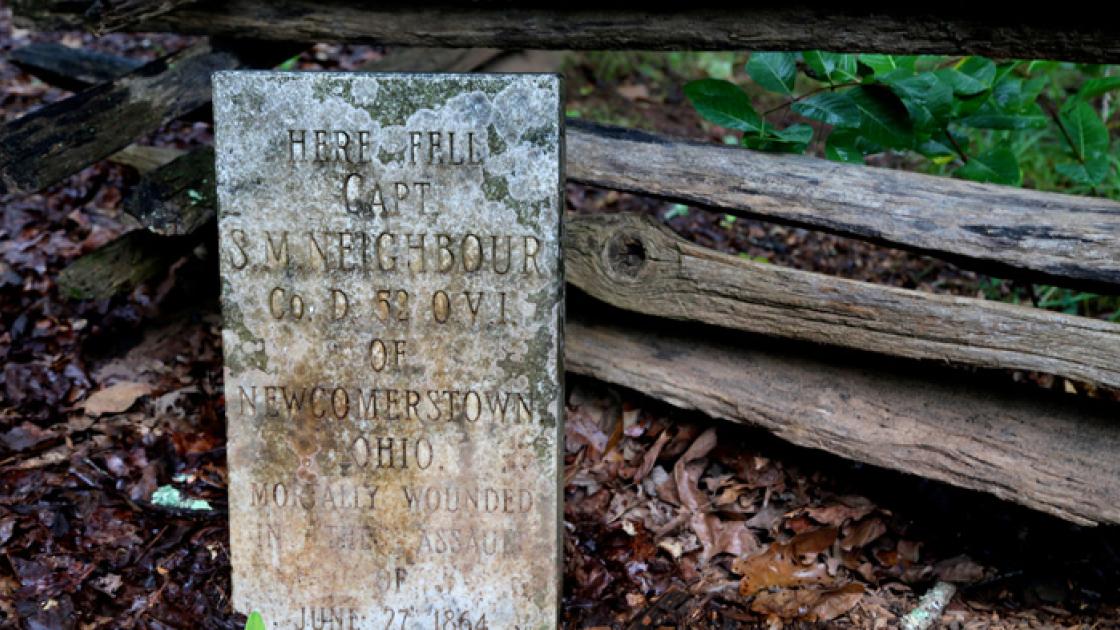
Some of Mitchell's brigade made it all the way up the slope to the entrenched salient held by Maney's Tennessee brigade. The Confederates fired over the parapet so fast that the gun barrels got too hot to hold. The Yankees were so close that the Tennesseans threw rocks at them. Eventually, after twenty minutes of this intense fighting, Mitchell's men had to retreat, but many could not go back all the way down the slope. They found cover anywhere from twenty to a hundred yards from the Confederate works and dug in with their bayonets. When it was all over, General Davis reported 824 casualties for his division.
After the fighting, Confederate Lt. Col. William Martin called for a truce so that the Federals could retrieve their wounded in front of the Confederate works; the dry brush had caught fire and some men were burning to death. Recent scholarship suggests Martin's motives were not entirely humanitarian. During the truce, he hoped the Confederates would gather up Yankee rifles under the white flag and save the abatis in front of his works from burning up.
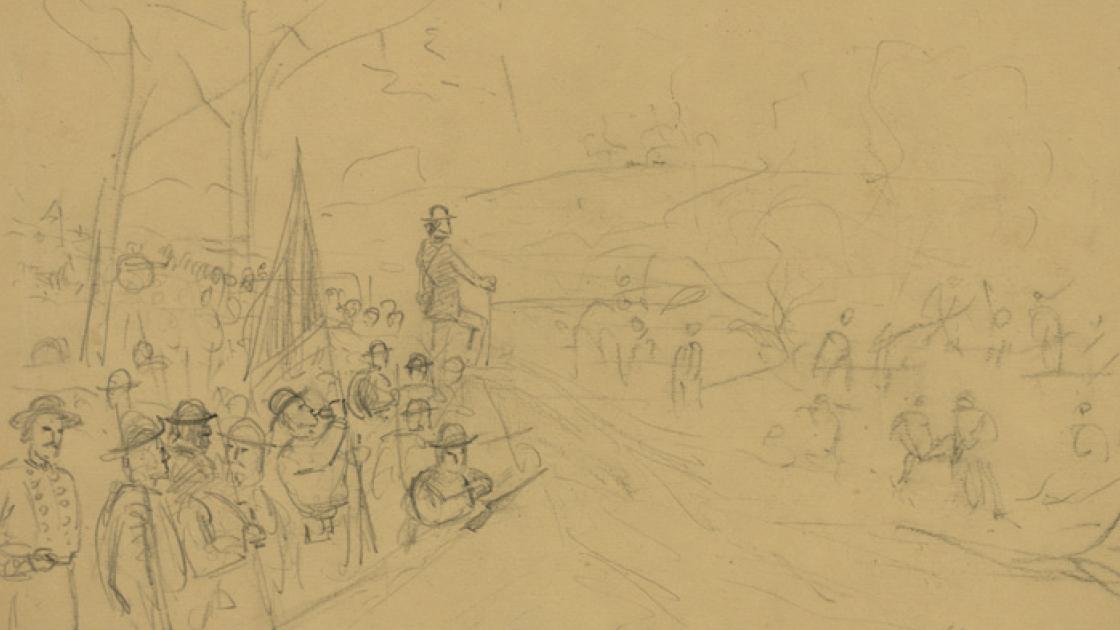
Related Battles
3,000
1,000
